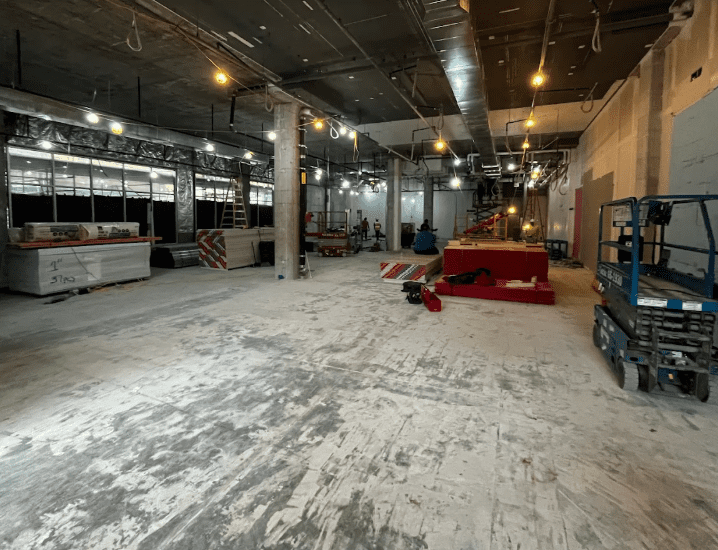Introduction
Residential building construction refers to the process of designing, planning, and constructing buildings that are meant for people to live in. These structures can range from single-family homes and duplexes to larger apartment complexes and condominiums. The primary purpose of residential construction is to create safe, comfortable, and functional living spaces that meet the needs of individuals and families.
This type of construction is distinct from commercial or industrial construction in several ways. While residential projects focus on living spaces, commercial construction deals with buildings intended for business use—such as offices, retail stores, and restaurants. Industrial construction, on the other hand, involves facilities like factories, warehouses, and power plants that support manufacturing and production. Residential construction is typically on a smaller scale and involves different codes, design priorities, and materials compared to commercial or industrial projects.
The importance of residential construction goes beyond simply building houses. It plays a crucial role in urban development and community living, helping to shape neighborhoods, provide shelter, and support population growth. Well-planned residential projects contribute to the overall quality of life in a city or town, influencing everything from infrastructure development to the local economy. In rapidly growing areas like Central Texas, working with a reputable residential construction company in Austin, Texas ensures that new homes are built to meet high standards while integrating smoothly into the community.
Types of Residential Buildings
Residential buildings come in a variety of forms, each designed to meet different needs in terms of space, privacy, affordability, and location. Understanding these types helps homeowners, developers, and builders choose the right structure based on lifestyle, budget, and zoning regulations. Here’s a breakdown of the most common residential building types:
- Single-Family Homes
Single-family homes are detached structures built to house one family. They are the most traditional form of residential housing in the United States, offering the most privacy and outdoor space. These homes are commonly found in suburban neighborhoods and are ideal for families who want a private yard, a garage, and ample living space. Many clients seeking custom construction opt for this type, often turning to the best residential construction company in Austin, Texas for tailored design and quality workmanship.
- Multi-Family Units (Duplexes, Triplexes)
Multi-family units are residential buildings designed to house more than one family, with each unit having its own entrance, kitchen, and living space.
- Duplexes consist of two units, typically side-by-side or stacked vertically.
- Triplexes contain three separate living spaces within the same structure.
These are common in urban areas and transitional neighborhoods where land is limited but demand for housing is high. They provide a more affordable option than single-family homes and are often used for rental income or multi-generational living. A residential general contractor in Georgetown, TX can assist in building these structures while meeting all zoning and code requirements.
- Townhouses
Townhouses are multi-floor homes that share one or two walls with adjacent properties but have their own entrances. Unlike apartments, townhouses are individually owned and often come with a small backyard or garage. They’re commonly found in urban and suburban areas where land use needs to be efficient but where homeowners still want a semi-private living arrangement. These are a popular option for first-time homeowners, especially in master-planned communities.
- Apartment Complexes
Apartment complexes are large buildings or groups of buildings that contain multiple rental units. Each unit may vary in size, and residents typically share amenities like laundry rooms, gyms, or parking areas. Apartment living is most common in densely populated urban areas where space is at a premium. These structures are typically built by developers and property management companies looking to maximize housing availability on limited land.
- Condominiums (Condos)
Condos are similar to apartments in terms of physical structure, but the key difference is ownership. In a condo building, individuals own their units and share common areas like hallways, pools, and gyms through a homeowner’s association (HOA). Condos are popular in both city centers and vacation destinations, offering a low-maintenance lifestyle with shared amenities. Working with an experienced residential construction company in Austin, Texas is essential to ensure that condominium developments are both structurally sound and legally compliant.
Each of these residential building types serves different needs, and choosing the right one depends on factors like budget, location, space requirements, and long-term goals. Whether it’s building a custom single-family home or developing a multi-unit investment property, expert guidance from professionals like a residential general contractor in Georgetown, TX ensures that each project is executed with precision and aligned with local building codes and community standards.
Key Phases of Residential Construction
Planning and Design
- Working with architects and engineers
This is the initial stage where you collaborate with professionals to create detailed blueprints and plans for your home. Architects design the layout and aesthetics, while engineers ensure the structure will be safe and sound. - Permits and local zoning laws
Before construction starts, you must obtain the necessary permits. This ensures your project complies with local building codes, zoning laws, and regulations regarding property use and safety.
Site Preparation
- Land clearing and grading
The construction site is cleared of trees, rocks, and debris. Grading levels the land to ensure proper drainage and a stable base for the foundation. - Utilities and access
Arrangements are made for utility connections such as water, electricity, and sewage. Access roads or driveways may be constructed to allow machinery and workers to reach the site.
Foundation Work
- Slab, crawl space, or basement foundations
The foundation type is selected based on soil, climate, and design. This phase involves pouring concrete slabs, building crawl spaces, or excavating for basements, creating a solid base for the house.
Framing
- Structural framework (wood or steel)
This phase builds the skeleton of the home using wood or steel beams, defining walls, floors, and roof shape. - Roofing and exterior sheathing
The roof structure is installed, and exterior walls are covered with sheathing (plywood or OSB) to protect from weather and prepare for siding.
Installation of Systems
- Plumbing
Pipes and fixtures for water supply, drainage, and sewage are installed. - Electrical
Wiring for lighting, outlets, and appliances is set up according to safety codes. - HVAC
Heating, ventilation, and air conditioning systems are installed to regulate indoor climate.
Exterior Work
- Roofing
Final roofing materials (shingles, tiles, metal) are applied to protect the home. - Siding
Exterior walls are covered with siding materials such as wood, vinyl, or brick. - Windows and doors
Windows and doors are installed to seal the house and provide access and natural light.
Interior Work
- Insulation
Materials are added within walls and ceilings to regulate temperature and improve energy efficiency. - Drywall
Interior walls and ceilings are covered with drywall panels, then taped and finished for painting. - Flooring, painting, cabinetry
Floors are installed (hardwood, tile, carpet), walls are painted, and kitchen/bathroom cabinets are set.
Final Touches and Inspection
- Landscaping
Yard grading, planting, walkways, and driveways are completed to enhance curb appeal. - Building inspections and final approvals
Local authorities inspect the home for compliance with codes. After approval, the home is ready for occupancy.
Materials Used in Residential Construction
Wood Framing vs. Steel Framing
- Wood framing
The most common framing material for homes, especially in the U.S. It’s easy to work with, cost-effective, and provides good insulation properties. Wood framing involves using lumber for studs, joists, and rafters. However, it can be susceptible to pests (like termites), moisture damage, and fire. - Steel framing
Made from cold-formed steel sections, this framing is highly durable, resistant to fire, pests, and moisture. Steel framing is often used in areas prone to hurricanes or termites. It tends to be more expensive and requires specialized labor but offers greater structural strength and longevity.
Concrete, Brick, and Stone
- Concrete
Widely used for foundations, slabs, and sometimes walls. Concrete is strong, durable, and resistant to fire and pests. It can also be poured into various shapes and sizes, making it versatile for construction. - Brick
Often used for exterior walls and facades. Brick is durable, fire-resistant, and provides good thermal mass (helps regulate indoor temperatures). It also offers a classic aesthetic appeal. - Stone
Used primarily for decorative features, foundations, or exterior walls. Stone is natural, durable, and provides excellent insulation but tends to be more expensive and labor-intensive to install.
Insulation and Energy-Efficient Materials
- Insulation materials such as fiberglass, spray foam, cellulose, and rigid foam boards help regulate indoor temperatures by reducing heat transfer.
- Energy-efficient materials include high-performance windows, reflective roofing materials, and advanced framing techniques to minimize thermal bridging.
- Using these materials lowers energy consumption and improves comfort in the home.
Roofing Options (Shingles, Tiles, Metal)
- Shingles
The most common roofing material, especially asphalt shingles, due to affordability, ease of installation, and variety of styles and colors. - Tiles
Made from clay or concrete, tiles are durable, fire-resistant, and provide a distinctive aesthetic. They are heavier and usually costlier, often seen in Mediterranean or Spanish-style homes. - Metal roofing
Known for longevity, durability, and energy efficiency. Metal roofs can reflect heat, resist extreme weather, and last decades with minimal maintenance. Common metals include steel, aluminum, and copper.
Professionals Involved in Residential Construction
General Contractors
- The general contractor (GC) is the main manager responsible for overseeing the entire construction project.
- They coordinate all aspects—from scheduling workers and ordering materials to ensuring the project stays on budget and on time.
- The GC hires subcontractors, manages communication between all parties, and ensures compliance with building codes and safety regulations.
Subcontractors (Plumbers, Electricians, etc.)
- Subcontractors are specialized tradespeople hired by the general contractor to perform specific tasks.
- Examples include plumbers (install water and sewer lines), electricians (wire the house for power and lighting), HVAC technicians (install heating and cooling systems), carpenters, painters, and roofers.
- Each subcontractor brings expert knowledge in their field to ensure that the work meets industry standards and code requirements.
Architects and Engineers
- Architects design the home’s layout, look, and functionality. They create detailed blueprints and may help select materials and finishes.
- Engineers (structural, civil, mechanical, electrical) ensure that the architect’s designs are safe and feasible. They calculate loads, stresses, and design structural elements, foundations, and systems like plumbing and electrical.
- Both professionals collaborate closely to make sure the design is both aesthetically pleasing and structurally sound.
Inspectors and City Officials
- Inspectors work for local government agencies and review the construction at various stages to ensure it complies with building codes, safety standards, and zoning laws.
- They check foundations, framing, electrical wiring, plumbing, insulation, and final construction quality before approving each phase.
- City officials also issue permits and provide final occupancy certificates, officially approving the home for living.
Regulations and Codes
- Local building codes
These are mandatory rules set by city or county governments that regulate construction methods, materials, safety, and structural integrity. Builders must follow these codes to ensure buildings are safe and suitable for occupancy. - Safety standards
Construction must comply with safety regulations to protect workers and future occupants. This includes OSHA guidelines on job site safety, fire prevention measures, and structural safety standards. - Energy efficiency and green building practices
Increasingly, homes are built to be energy-efficient and environmentally friendly. This includes using insulation, windows, and systems that reduce energy use. Certifications like LEED (Leadership in Energy and Environmental Design) encourage sustainable building through energy savings, water efficiency, and indoor environmental quality.
Common Challenges in Residential Construction
- Budget overruns
Unexpected costs due to design changes, material price fluctuations, or unforeseen site conditions can push the budget beyond initial estimates. - Delays due to weather or permit issues
Rain, storms, or extreme temperatures can halt work temporarily. Also, delays in getting required permits or inspections can hold up construction schedules. - Supply chain disruptions
Shortages or delays in delivery of materials like lumber, steel, or fixtures can slow down progress. - Labor shortages
Finding skilled workers like electricians, plumbers, and carpenters can be challenging, causing scheduling bottlenecks.
Benefits of Hiring a Residential Construction Company
- Expertise and experience
Professional companies bring knowledge of best practices, efficient techniques, and problem-solving skills. - Project management and coordination
They handle scheduling, procurement, subcontractor hiring, and communication, ensuring smooth workflow. - Compliance with local regulations
Construction companies stay updated on codes and permits, reducing risks of legal issues or costly rework. - Quality assurance
Reputable companies maintain high standards and warranties, delivering a finished home that meets expectations.
Trends in Residential Construction
- Sustainable building materials
Use of recycled, renewable, or low-impact materials like bamboo, reclaimed wood, and low-VOC paints to reduce environmental footprint. - Smart home technology
Integration of automated systems for lighting, security, climate control, and appliances that enhance convenience and efficiency. - Prefabrication and modular homes
Factory-built sections or entire modules assembled onsite reduce construction time and waste. - Energy-efficient and passive house designs
Homes built to minimize energy use through superior insulation, airtight construction, and strategic orientation to maximize natural heating and cooling.
Conclusion
Residential building construction is the comprehensive process of planning, designing, and building homes that are safe, functional, and comfortable. Understanding the key phases—from site preparation to final inspection—helps ensure a successful project.
Working with experienced professionals, like architects, engineers, subcontractors, and a trusted residential construction company, is essential to navigate complex regulations, maintain quality, and avoid costly delays.
If you’re ready to build your dream home or need expert guidance on your residential construction project, A & A 1st Choice LLC is here to help. Serving Round Rock and Austin, Texas, we bring expertise, commitment, and top-quality workmanship to every job.
Contact us today at 1 (512) 767-2935 to get started on your next project!


